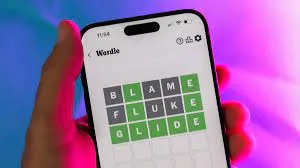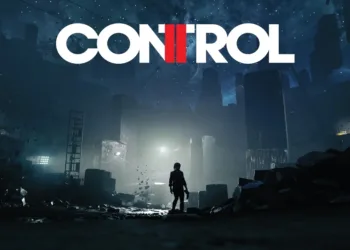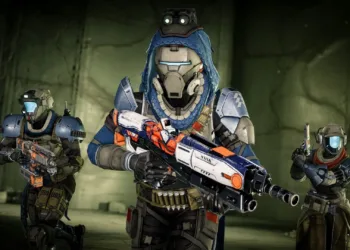Stuck on today’s NYT Strands puzzle? The “F-I-L-M” theme has stumped countless players this Tuesday, but we’ve cracked the code. Whether you need subtle hints or the complete solution, this guide delivers everything to conquer the November 4 challenge and maintain your winning streak.
Table of Contents
Today’s NYT Strands Quick Reference
| Element | Details |
|---|---|
| Date | Tuesday, November 4, 2025 |
| Theme | F-I-L-M |
| Spangram | FOURLETTERMOVIES |
| Total Words | 8 theme words + 1 spangram |
| Difficulty | Medium-Hard |
| Word Length | All theme words are 4 letters |
The theme celebrates iconic four-letter movie titles that left cultural impacts across cinema history.

Understanding the “F-I-L-M” Theme
Today’s puzzle focuses on memorable four-letter movie titles spanning various genres—action, drama, horror, and family entertainment. These films have achieved cultural significance, from blockbuster franchises to critically acclaimed classics.
Think of titles that work with just four letters yet remain instantly recognizable: adventure epics, creature features, animated favorites, and tense thrillers. The theme tests your film knowledge alongside word-finding skills.
For more NYT puzzle strategies and daily solutions, visit TechnoSports’ word game hub.
Strategic Hints (No Spoilers)
Starting Letters & Positions
The 8 theme words begin with: B, C (×2), D, H (×2), J, M
Grid Position Clues:
- 1 word starts from the top row
- 1 word starts from the bottom row
- 3 words start from the left edge
- 3 words start from the right edge
- 1 word starts from the middle
This spatial distribution helps narrow your search area significantly.
Clue Words for Hints
If you’re still struggling, find these words to earn hints in-game:
- CARER
- ESCOT
- ROCS
- STORM
- CORE
- CLUSTER
According to the New York Times Games official page, finding non-theme words unlocks hint functionality that reveals theme word locations.
The Spangram Revealed
FOURLETTERMOVIES
This spangram brilliantly describes the theme itself—it spans the grid connecting opposite sides while explaining what all theme words represent. Once you spot this, the individual movie titles become much easier to identify.
For comprehensive spangram strategies across NYT puzzles, check out TechnoSports’ puzzle-solving techniques.
Complete Answers (Spoilers!)
Ready for the full solution? Here are today’s eight four-letter movie titles:
- BABE – The beloved pig film that charmed audiences
- CARS – Pixar’s animated racing adventure
- CLUE – The whodunit mystery comedy based on the board game
- DUNE – The sci-fi epic (multiple adaptations exist)
- HEAT – The crime thriller featuring an iconic coffee shop scene
- HULK – Marvel’s green superhero smash-fest
- JAWS – Spielberg’s terrifying shark thriller
- MILK – The biographical drama about Harvey Milk
Each title represents a culturally significant film that achieved recognition despite its brevity.
Why This Theme Challenged Players
Four-letter movie titles feel deceptively simple, yet the constraint creates difficulty. Players often overthink the puzzle, searching for obscure titles when the answers include mainstream blockbusters and classics.
The grid’s letter arrangement also creates interference patterns where theme words overlap with potential non-theme words, increasing complexity. The spatial distribution across all grid edges prevents easy pattern recognition.
For daily NYT puzzle coverage including Wordle and Connections, bookmark TechnoSports’ NYT games section.

Yesterday’s Strands Recap
Monday’s puzzle featured the theme “WEE WEE WEE!” with spangram THISLITTLEPIGGY. Answers included: BEEF, HOME, MARKET, NONE, ROAST, STAYED, and WENT—all referencing the classic nursery rhyme.
Tips for Future Strands Success
Start with the spangram: It always connects opposite grid sides and clarifies the theme immediately.
Use the hint system strategically: Finding clue words unlocks hints when genuinely stuck.
Think broad initially: Don’t fixate on obscure references—Strands typically features recognizable themes.
Check all grid edges: Theme words frequently start from boundaries rather than interior positions.
Consider overlapping letters: Theme words often share letters, creating interconnected paths.
For additional NYT puzzle tools including the Wordle Solver and Spelling Bee Solver, visit the official New York Times Games tools page.
Related Puzzles
Craving more word challenges? Try these complementary NYT games:
- Wordle – The five-letter word phenomenon
- Connections – Group related words by category
- Mini Crossword – Quick daily crossword fix
- Spelling Bee – Create words from seven letters
Each offers unique challenges that complement Strands’ themed word-finding mechanics.
FAQs
Why are some Strands themes harder than others despite similar mechanics?
Theme difficulty stems from familiarity and specificity. Broad themes like “animals” or “colors” feel intuitive with commonly known words, while niche themes like “four-letter movies” require specialized knowledge. Today’s puzzle challenged players who aren’t film enthusiasts or couldn’t recall abbreviated titles. Additionally, letter grid arrangements vary—some configurations hide theme words more cleverly than others through overlapping non-theme words. The spatial distribution also impacts difficulty; when all theme words cluster in one area versus spreading across the entire grid, solving patterns change dramatically. NYT intentionally varies difficulty throughout the week to maintain engagement across skill levels.
How does the Strands hint system actually work?
The hint system rewards exploration while preventing complete stalling. When you find valid non-theme words (typically 4+ letters) in the grid, you accumulate hint credits. Once earned, activating a hint highlights the starting letter of an unsolved theme word, dramatically narrowing your search. The system encourages active engagement rather than passive waiting—you must demonstrate effort through word discovery before receiving assistance. Strategic players intentionally search for obvious non-theme words early to bank hints for tougher theme words later. This balanced approach prevents frustration while maintaining challenge integrity, ensuring puzzles remain satisfying rather than impossible when themes prove particularly obscure.







